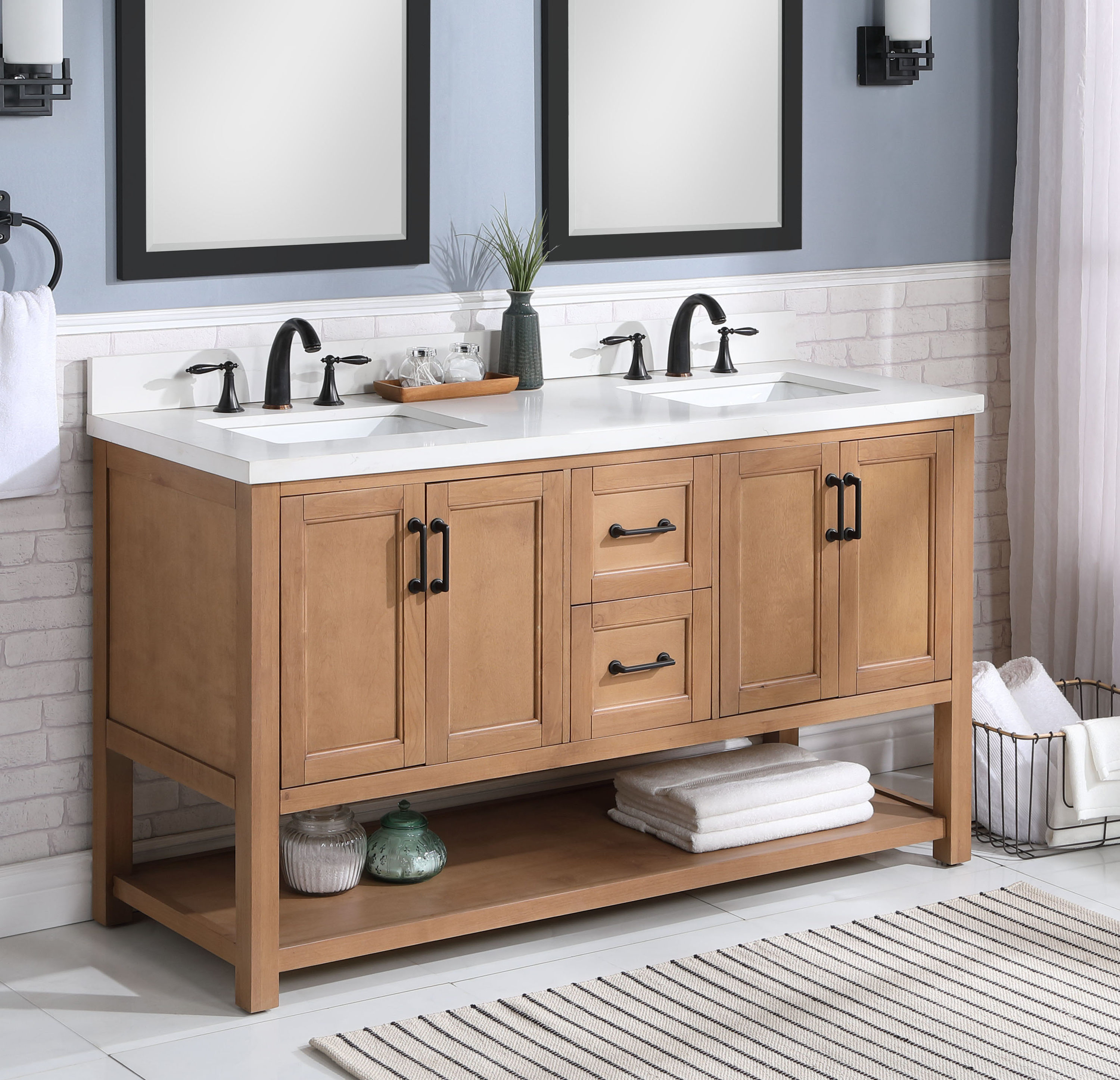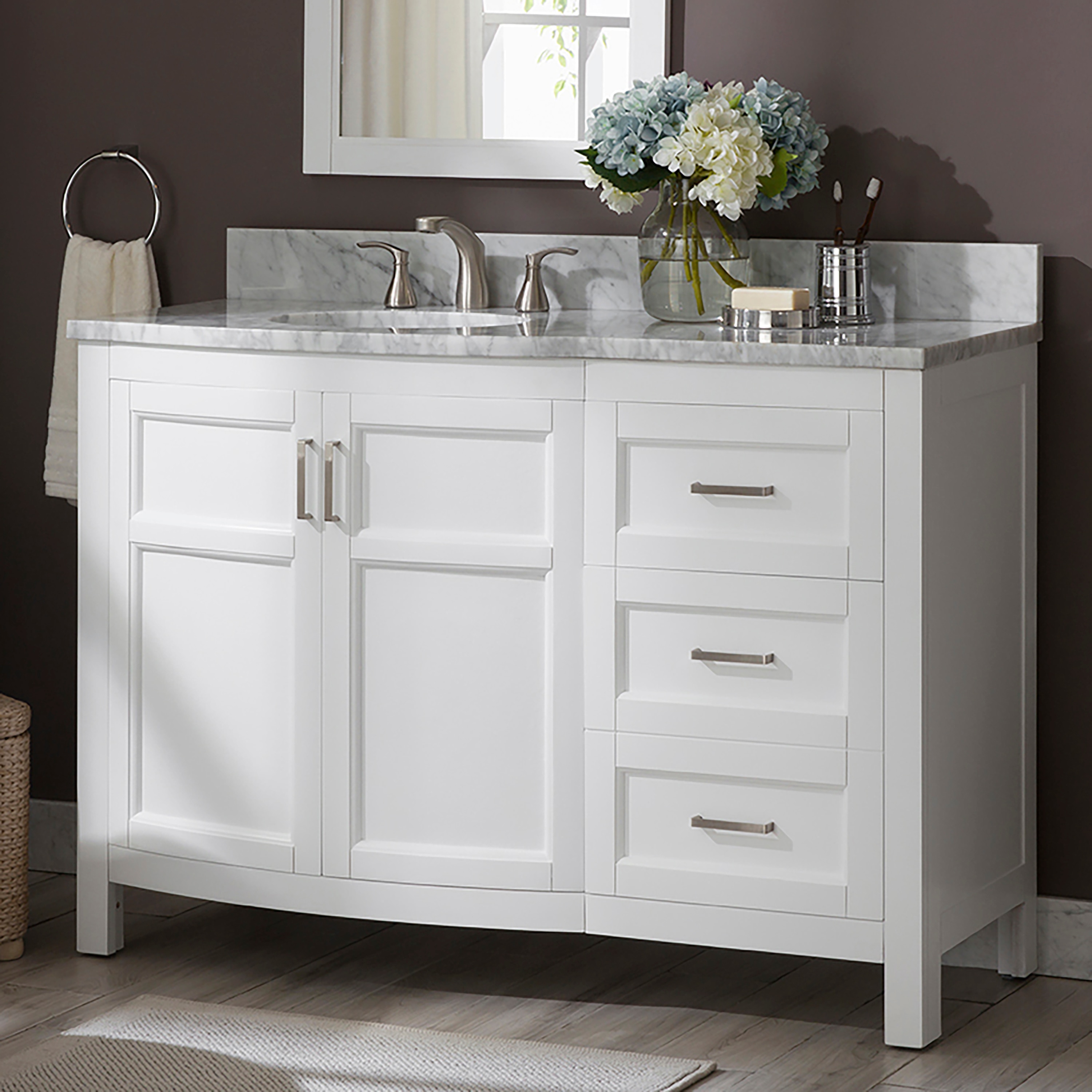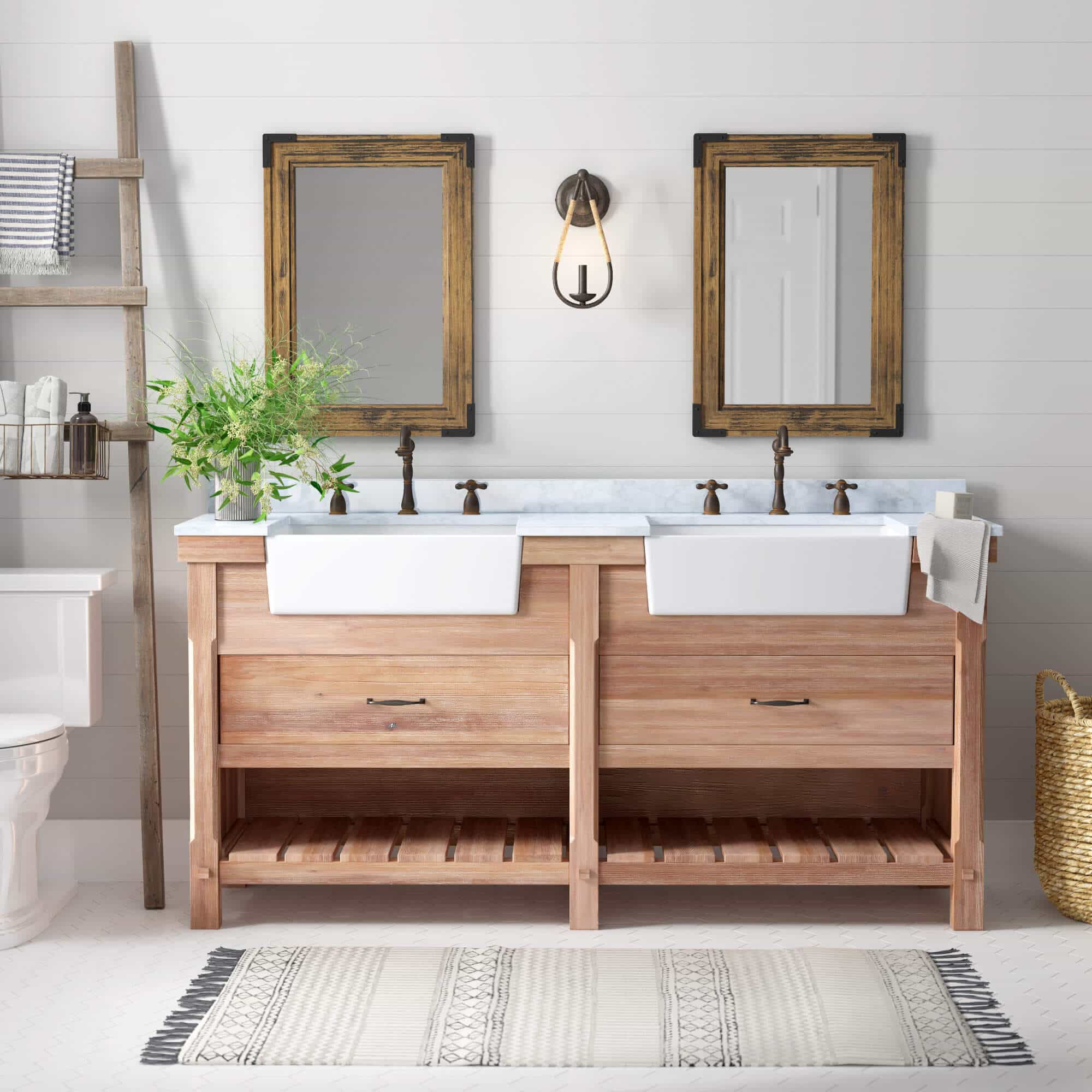Types of 50 Inch Bathroom Vanity Tops

Choosing the right vanity top for your bathroom can be a daunting task, especially with the wide array of materials available. A 50-inch vanity top offers ample space for your bathroom essentials while complementing the overall design. Let’s delve into the most common materials used for these vanity tops and their unique characteristics.
Natural Stone
Natural stone is a timeless and elegant choice for bathroom vanity tops. These materials are quarried from the earth, offering a unique and natural beauty. Granite, marble, and quartz are among the most popular natural stone options.
- Granite is a highly durable and scratch-resistant material, making it ideal for high-traffic areas. Its distinctive veining and speckles add visual interest and character to your bathroom. Granite is naturally resistant to heat and stains, but it requires regular sealing to prevent staining.
- Marble, known for its luxurious and sophisticated appearance, adds a touch of elegance to any bathroom. However, marble is porous and susceptible to scratches and stains, requiring careful maintenance and regular sealing. Its delicate nature calls for gentle cleaning and avoiding harsh chemicals.
- Quartz, a harder and denser stone, offers excellent durability and stain resistance. Quartz is less porous than marble, requiring less frequent sealing. Its wide range of colors and patterns provides flexibility in design, allowing you to create a unique and personalized bathroom aesthetic.
Engineered Stone, 50 bathroom vanity top
Engineered stone, also known as quartzite, is a man-made material that combines crushed natural stone with resin. This process creates a durable and aesthetically pleasing surface that mimics the look of natural stone.
- Quartzite offers excellent durability and stain resistance, making it a popular choice for bathroom vanity tops. Its non-porous surface is easy to clean and maintain. Quartzite is available in a wide range of colors and patterns, allowing you to achieve a unique and personalized look.
Solid Surface Materials
Solid surface materials, such as Corian and cultured marble, are non-porous and seamless surfaces. They are often used in bathrooms due to their durability, stain resistance, and ease of maintenance.
- Corian is a popular solid surface material known for its seamless and scratch-resistant surface. It is also heat and stain resistant, making it a practical choice for bathroom vanity tops. Corian’s versatility allows for custom designs and shapes, enabling you to create a unique and personalized look.
- Cultured marble is a composite material that mimics the look of natural marble. It is a cost-effective alternative to natural marble, offering similar aesthetic appeal with greater durability. Cultured marble is non-porous and resistant to stains, making it easy to clean and maintain.
Design Considerations for 50 Inch Vanity Tops

A 50-inch vanity top provides ample space for a functional and stylish bathroom. Choosing the right design elements for your vanity top is crucial in creating a bathroom that reflects your personal style and needs.
Styles of 50 Inch Vanity Tops
The style of your 50-inch vanity top should complement the overall aesthetic of your bathroom. Consider the different styles available, each with unique design features that create a distinct look.
- Contemporary: Clean lines, minimalist details, and sleek finishes define contemporary style. Vanity tops often feature a simple edge profile, such as a waterfall or mitered edge, and may incorporate a vessel sink for a modern touch. Common materials include quartz, granite, and solid surface.
- Traditional: Traditional vanity tops exude elegance and timeless appeal. They often feature intricate details, such as raised edges, carved moldings, and ornate hardware. Materials like marble, granite, and wood are popular choices, adding a touch of classic sophistication.
- Farmhouse: Farmhouse style vanity tops embrace a rustic charm with natural materials and a touch of vintage appeal. Distressed wood, reclaimed barn wood, and natural stone countertops are common elements. The design often features a simple, rectangular shape with a farmhouse sink and exposed hardware.
- Industrial: Industrial style vanity tops embody a raw and edgy aesthetic. They often feature exposed metal elements, such as steel legs or hardware, and materials like concrete, reclaimed wood, or distressed metal. The design often incorporates a minimalist edge profile and a vessel sink for a modern industrial feel.
Key Design Elements
The choice of design elements for your 50-inch vanity top plays a crucial role in achieving the desired style.
- Edge Profile: The edge profile defines the shape and finish of the vanity top’s edge. Options include:
- Mitered Edge: A clean, angular edge with a 45-degree angle.
- Waterfall Edge: A continuous, flowing edge that cascades down the side of the vanity.
- Ogee Edge: A classic, curved edge with a gentle S-shape.
- Bullnose Edge: A rounded edge that adds a soft, traditional touch.
- Sink Placement: The placement of the sink can significantly impact the functionality and aesthetic of the vanity top. Options include:
- Undermount Sink: A sink that sits below the countertop, creating a seamless, integrated look.
- Top Mount Sink: A sink that sits on top of the countertop, offering a classic and practical design.
- Vessel Sink: A sink that sits on top of the countertop and is typically freestanding, adding a modern touch.
- Countertop Materials: The choice of countertop material influences the durability, style, and maintenance requirements of your vanity top. Popular options include:
- Granite: A durable, natural stone known for its unique patterns and resistance to scratches and heat.
- Marble: A luxurious natural stone with a classic, elegant appearance, but it is more susceptible to staining and etching.
- Quartz: An engineered stone that offers durability, stain resistance, and a wide range of colors and patterns.
- Solid Surface: A non-porous material that is seamless, easy to clean, and available in various colors and textures.
- Wood: A natural material that adds warmth and character, but it requires regular maintenance and is susceptible to water damage.
Design Example: Contemporary 50 Inch Vanity Top
Here is a design example of a contemporary 50-inch vanity top:
- Materials: Quartz countertop with a waterfall edge, undermount sink, and brushed nickel hardware.
- Colors: A cool, neutral shade of gray for the countertop, complemented by white cabinetry and brushed nickel hardware.
- Design Elements: A sleek, minimalist design with clean lines, a waterfall edge profile, and an undermount sink.
Installation and Maintenance of 50 Inch Vanity Tops: 50 Bathroom Vanity Top

Installing a 50-inch vanity top is a significant step in your bathroom renovation, bringing both aesthetic appeal and functionality. The process requires careful planning and execution to ensure a seamless and durable installation. Just as a carpenter carefully measures and crafts each piece of wood, so too must you approach this task with precision and a mindful eye for detail. Remember, patience and attention to detail are your allies in achieving a successful installation.
Preparing for Installation
Preparing for the installation is crucial. It’s like laying a solid foundation for a grand building; without a strong base, the structure will be unstable.
- Clear the Area: Ensure the area around the vanity is clear of any obstacles. This will provide you with ample space to work comfortably and avoid any potential damage to surrounding items. It’s like clearing a path for a journey; you need a smooth route to proceed without obstruction.
- Gather Tools and Materials: Gather all necessary tools and materials, such as a tape measure, level, pencil, safety glasses, gloves, silicone sealant, and a utility knife. This is akin to a painter preparing their palette and brushes, ensuring they have all the necessary tools to create a masterpiece.
- Check the Vanity Base: Ensure the vanity base is level and secure. If the base is not level, it can cause the vanity top to sit unevenly, leading to problems later on. It’s like ensuring the foundation of a house is stable; if it’s uneven, the entire structure will be compromised.
- Measure the Vanity Top: Carefully measure the vanity base to ensure the vanity top is the correct size. This is like a tailor taking precise measurements for a garment; an incorrect measurement can result in a poorly fitted vanity top.
Cutting and Sealing
Cutting and sealing are essential steps in ensuring a perfect fit and preventing water damage. This is like a sculptor meticulously shaping a piece of stone, removing unwanted parts to reveal the desired form.
- Cut the Vanity Top: If necessary, cut the vanity top to size using a circular saw or a utility knife. This is like a surgeon carefully making an incision, ensuring precision and control.
- Apply Silicone Sealant: Apply a bead of silicone sealant around the edges of the vanity top where it meets the vanity base. This will create a watertight seal and prevent water from seeping into the wood, potentially causing damage. This is like applying a protective layer of paint to a wooden surface, shielding it from the elements and preserving its beauty.
- Install the Vanity Top: Carefully place the vanity top onto the vanity base, ensuring it is level and centered. Secure the vanity top to the vanity base using screws or brackets. This is like carefully assembling a piece of furniture, ensuring all parts are securely connected to create a sturdy and functional piece.
Maintaining Your Vanity Top
Just as a gardener tends to their plants, providing them with the necessary care and nourishment, so too must you maintain your vanity top to preserve its beauty and longevity.
- Regular Cleaning: Clean the vanity top regularly with a mild cleaner and a soft cloth. Avoid harsh chemicals or abrasive cleaners, as they can damage the finish. This is like gently wiping away dust from a precious piece of art, preserving its delicate surface.
- Prevent Staining: Immediately wipe up any spills or splatters to prevent staining. This is like swiftly removing a stain from a pristine white tablecloth, ensuring its beauty remains untarnished.
- Protect from Scratches: Avoid placing sharp objects directly on the vanity top. Use coasters or trivets to protect the surface from scratches. This is like placing a protective cover over a valuable rug, safeguarding it from wear and tear.
